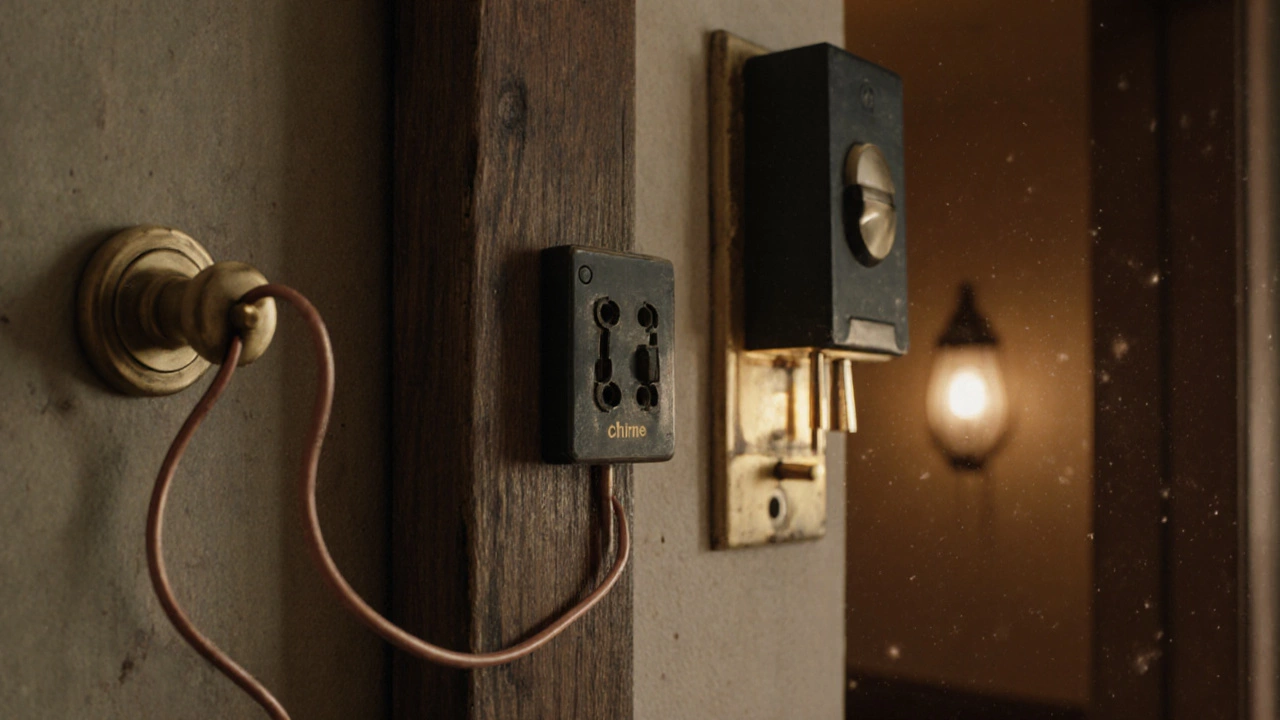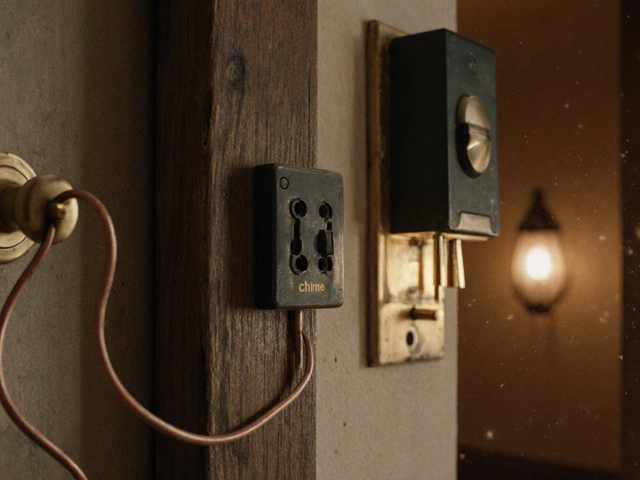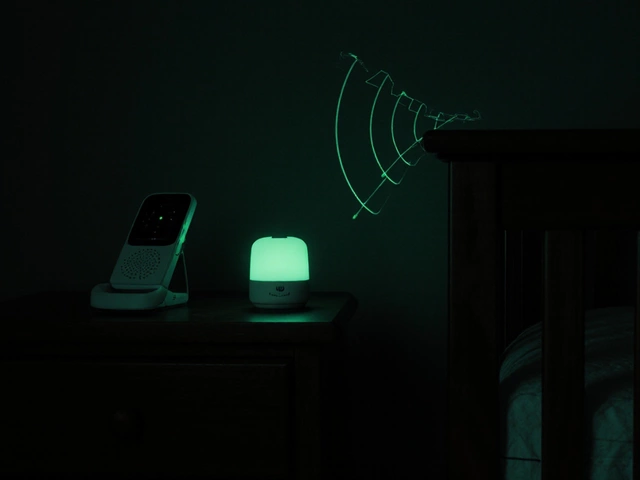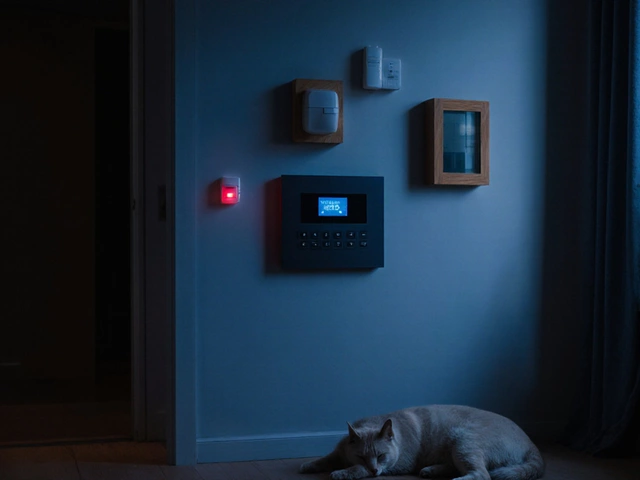Doorbell Type Selector
Find Your Perfect Doorbell
Answer these questions to discover which doorbell type suits your home and needs best.
When you press a doorbell, you expect it to ring-simple, right? But behind that little chime are three very different technologies, each with its own pros, cons, and ideal use cases. Whether you’re replacing an old system, moving into a new home, or just trying to keep your packages safe, knowing the difference between wired, wireless, and smart doorbells makes all the difference.
Wired Doorbells: The Classic That Still Works
Wired doorbells have been around since the 1800s, and they’re still the most common type in older homes. They run on low-voltage electricity-usually 16 volts AC-sent from a transformer (often hidden in your basement or attic) through thin wires to a button outside and a chime inside. No batteries. No Wi-Fi. Just a direct electrical connection.That simplicity means one big advantage: reliability. According to Home Security Heroes’ 2022 study, wired doorbells operate 99.8% of the time. If your power’s on, it works. No signal drops. No dead batteries. No app glitches.
But here’s the catch: installation is messy. You need to run wires through walls, drill holes, and connect to a transformer. If you get it wrong-say, you overload the transformer-you can burn it out. DIY success rates for beginners are only 28%, and professional installation runs $150-$300. That’s why most people stick with wired systems only when they’re already wired for one.
Chime units are basic: usually a plastic box with a metal striker that hits two rods for the classic ‘ding-dong.’ You can upgrade to electronic chimes with 10+ sounds, but they still don’t do much beyond ringing. Basic models cost $15. Premium ones with customizable tones go up to $75. Maintenance? Almost nothing. Maybe a clean once a year. Lifespan? 20+ years if the wiring holds up.
Wired doorbells are perfect if you live in a home with existing wiring, hate dealing with batteries, and don’t care about seeing who’s at the door. But if you want to know whether it’s the mail carrier or someone suspicious? You’re out of luck.
Wireless Doorbells: Easy to Install, Hard to Ignore
Wireless doorbells are the go-to for renters, historic homes, or anyone who doesn’t want to drill holes. The button outside has a battery (usually two AA or AAA), and when pressed, it sends a radio signal-most often at 433MHz in Europe or 868MHz in the UK-to a chime unit plugged into a wall outlet.Setup? You can do it in under 15 minutes. Stick the button to the door with double-sided tape. Plug the chime in. Pick a tone. Done. No electrician needed. DIY success rates? 92%.
Modern wireless models come with features you wouldn’t expect from a simple chime: 30-50 chime sounds, adjustable volume (60-90 decibels), and even flashing LED lights for the hearing impaired. Some even let you add extra receivers in different rooms.
But they’re not perfect. Batteries die. Fast. In cold weather, they might last only 6 months. One Reddit user in Sheffield said they changed batteries four times last winter. And signal range? A concrete wall can cut it by half. If your doorbell is on the far side of a thick brick wall, you might get a weak signal-or none at all.
Interference is another issue. If your neighbor has the same model, you might hear their doorbell ring when they press theirs. Consumer Reports found 8-12% of installations had false triggers.
Price-wise, basic sets cost $25-$50. If you want multiple chimes or smartphone alerts (yes, some wireless models do this), you’re looking at $100-$150. Annual cost? About $5 for new batteries. Not bad-but you’ll keep paying it every year.

Smart Doorbells: The Security Upgrade You Can’t Ignore
Smart doorbells-also called video doorbells-are the fastest-growing type on the market. They combine a camera, motion sensor, two-way audio, and Wi-Fi into one device. You can see, hear, and talk to visitors from your phone, even if you’re at work or on vacation.Most models have 1080p HD video, a 140-160° field of view, and infrared night vision that works up to 30 feet. Some, like Eufy, even have dual cameras. Motion detection alerts you when someone approaches. Two-way talk lets you tell a delivery driver to leave the package on the porch-or warn off someone who shouldn’t be there.
Power options vary. Some plug into your existing wired doorbell system (if you have one), others run on rechargeable batteries, and a few even use solar panels. Battery life? 3-6 months, depending on how often people come to your door. Ring’s Battery Pro model, released in early 2023, claims up to 6 months-better than most.
Connectivity is key. They need 2.4GHz Wi-Fi. Most don’t support 5GHz, so if your router is far from the door, you might get lag or disconnections. Minimum upload speed? 2Mbps. If you’re in a rural area with spotty internet, this could be a problem.
Here’s the big trade-off: subscriptions. Basic cloud storage (like 24 hours of recordings) costs $3-$5/month. Full 24/7 recording? $30/month. That adds up to $36-$360 a year. One Amazon reviewer called it “highway robbery.” But here’s the thing: 92% of smart doorbell users say it reduced package theft. That’s not just convenience-it’s protection.
Installation takes 30-60 minutes. You’ll need a drill, screwdriver, and maybe a helper to hold the doorbell while you connect wires. Professional install through Best Buy or Lowe’s runs $99-$199. The apps? Most are excellent. Step-by-step guides, live previews, and easy sharing with family members.
Market leaders? Ring (47% share), Google Nest (22%), and Blink (15%). But cheaper options like Wyze and Lorex offer solid 1080p video for under $100. The catch? They often lack advanced features like person detection or integration with smart locks.
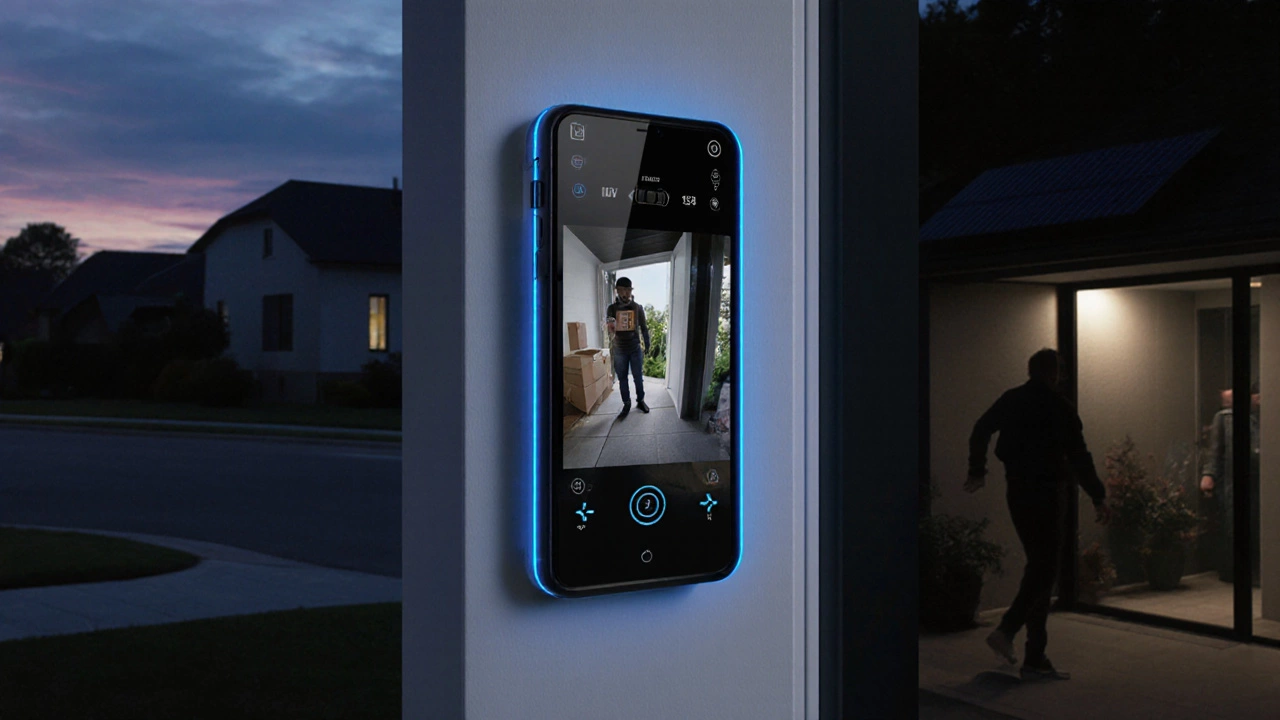
Which One Should You Choose?
Let’s cut through the noise. Here’s who each type is best for:- Wired: You own an older home with existing wiring. You want something that just works. You don’t care about video or alerts. Budget under $50.
- Wireless: You rent. You’re in a listed building. You hate wiring. You want a quick, cheap upgrade with decent sound and visual alerts. You’re okay replacing batteries twice a year.
- Smart: You want to see who’s at the door. You’ve had packages stolen. You want to talk to visitors remotely. You’re willing to pay $150-$250 upfront and $3-$30/month for storage. You have reliable Wi-Fi.
Market trends back this up. In 2023, 45% of existing homes still use wired doorbells. Wireless holds 30%. But in new builds? 27% come with smart doorbells installed-up from just 8% in 2018. By 2027, experts predict smart doorbells will make up 45% of all installations.
And privacy? It’s real. MIT’s Cybersecurity Lab says unsecured video doorbells are the third most common entry point for home hacks-after routers and smart TVs. Always enable two-factor authentication. Use strong passwords. Turn off public sharing. Don’t assume the brand keeps you safe.
What’s Next for Doorbells?
The future isn’t just about better cameras. New models are starting to harvest energy from the button press itself-kinetic charging that cuts battery use by 40%. California now requires video doorbells to have a physical light that turns on when recording. Other regions might follow.Hybrid systems are also emerging: doorbells that keep ringing like a traditional wired unit, but also stream video if power and Wi-Fi are available. Think of it as a safety net: if your internet goes down, you still hear the chime.
Wired doorbells won’t vanish. They’re too reliable. But they’re becoming the backup, not the main event. For most people today, the real question isn’t whether to upgrade-it’s which smart doorbell gives you the best balance of features, price, and privacy.
Can I install a smart doorbell if I don’t have a wired doorbell?
Yes. Many smart doorbells, like Ring and Blink, run on rechargeable batteries and don’t need existing wiring. You just need a spot to mount it and a strong Wi-Fi signal. Some models even come with solar chargers to extend battery life.
Do wireless doorbells work in cold weather?
They can, but battery life drops sharply in freezing temperatures. Lithium batteries handle cold better than alkaline ones. If you live in Sheffield and get winter frosts, consider switching to lithium AA batteries-they last longer and perform better in the cold.
Is it worth paying for cloud storage on a smart doorbell?
It depends. If you only want to see who’s at the door in real time, you don’t need it. But if you want to review footage after a package is stolen or a suspicious person loiters, cloud storage is essential. Basic plans ($3-$5/month) give you 24-48 hours of clips. Full 24/7 recording costs $25-$30/month. Some brands offer local storage (SD cards) as a cheaper alternative.
Can I use a smart doorbell without a smartphone?
You can, but you lose most of the benefits. The chime will still ring indoors, and you can still use two-way talk if you have a smart speaker like an Amazon Echo. But you won’t get alerts, video history, or remote access. For full functionality, a smartphone or tablet is required.
Do smart doorbells work during a power outage?
Battery-powered models do-if they’re charged. Wired models that rely on home electricity won’t work unless they have a backup battery. Some high-end models, like the Ring Video Doorbell Pro 2, include a backup battery that kicks in during outages. Always check the specs before buying.

